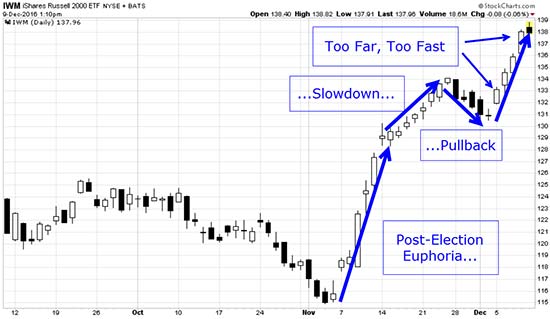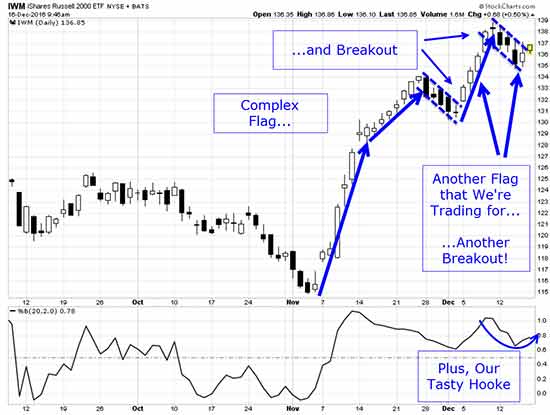The holiday season has a different vibe, doesn't it? The pace around us quickens, expectations rise, and despite the commercialization, at least some of the joy and optimism of the season seeps in around the edges.
Personally, this weekend, I'll be expecting my kids home from college and med school, and family members are already calling to arrange visits. They're even calling for some seasonally appropriate snow this weekend at my home in Delaware.
The markets themselves usually manage their own form of "joy" at this time of year. The optimism of the populace seems to bleed over into stock prices.
That's no idle speculation, either - history shows that the S&P 500 has provided positive returns in a whopping 49 of the past 65 Decembers. That's a win rate just north of 75%.
That's a strong result, but I've got a play in mind that's even more impressive...
Tap the Power of the January Effect in December
Many readers will have heard of the "January Effect," where small-capitalization stocks have historically outperformed their large-cap brethren during the month of January.
This blazing outperformance by the small caps was very clear in the second half of the 20th century, with Jeff Hirsch reporting in the "Stock Trader's Almanac" that small caps far outpaced big caps during January for 40 out of 43 years between 1953 and 1995.
During that time, small caps gave an absolute performance improvement that was staggering: The Wall Street Journal reports a small-cap outperformance of 5.1% versus large caps during the decade of the 1970s.
Put another way, a $100,000 portfolio invested in small caps would return $5,100 more than one invested in only large caps during the month of January. That's a huge edge for a single month.
Since then, it seems like everyone has jumped on this bandwagon and the outsized returns steadily diminished down to only a 1% edge in the 1990s - not bad, but no 5.1%.
However, this isn't necessarily a bad thing on the small-cap outperformance front. Hirsch has reported that the January Effect is still working... it's just working earlier.
Since the 1987 crash, small caps still outstrip the blue chips, and moving the entry date back to Dec. 15 has worked wonders: The numbers show a small-cap outperformance from Dec. 15 to Dec. 31 of 85% (3.5% versus 1.9%). And the effect remains viable though less strong if held through the middle or end of January.
And since 2011, we've seen the small caps build on that outperforming tendency with four out of five years showing strong outpacing by the smaller companies.
In addition, this is a seasonal tendency with a strong track record that is also built on a broader underpinning of overall market strength in December. Like all seasonals, it won't work every year, but this one is strong enough to build trades on.
Last week, I showed this chart with data through Friday, Dec. 9:
[mmpazkzone name="in-story" network="9794" site="307044" id="137008" type="4"]

I said, "Within a week, I expect us to see a pullback off of this extreme move." And that's exactly what we got, including a classic Hooke Pattern:

So then, the big question for the moment is this: Will this seasonal tendency work after the small caps have outperformed their large-cap cousins by so much since the U.S. elections?
The seasonals and the current fundamentals say: YES!
The reason small caps have outperformed since the election is the promise of tax reduction emanating from the combined Trump White House and Republican Congress.
And the thought process is simple: Smaller companies pay a higher effective tax rate than larger companies. So any tax relief will make a bigger impact on the small companies' bottom line, and their share price.
That makes a play like buying shares or January call options on the iShares Russell 2000 Index ETF (NYSE Arca: IWM) a smart bet right now - small caps are likely to move from strength to strength for the next month or so.
Follow Money Morning on Facebook and Twitter.
About the Author
D.R. Barton, Jr., Technical Trading Specialist for Money Map Press, is a world-renowned authority on technical trading with 25 years of experience. He spent the first part of his career as a chemical engineer with DuPont. During this time, he researched and developed the trading secrets that led to his first successful research service. Thanks to the wealth he was able to create for himself and his followers, D.R. retired early to pursue his passion for investing and showing fellow investors how to build toward financial freedom.



